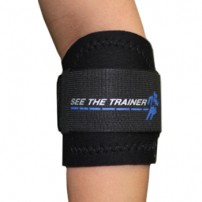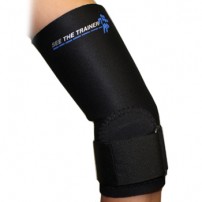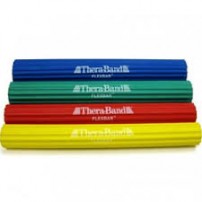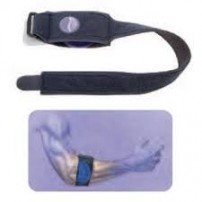Tennis Elbow
One of the most common complaints of active individuals is pain in or around the elbow joint. Tennis elbow can be caused by a number of things. The underlying cause is usually due to repetitive trauma to the muscles that make your wrist extend. The reason it has been named “tennis elbow” really is due to the evolution of sports medicine itself. Physicians began looking closely at the cause of these problems and questioning the folks about their activities and then examining the cause. It just so happened that tennis and the use or misuse of the tennis racket was one thing that continually popped up.
Tennis elbow then became the generic name for the problem but does not necessarily reflect the cause. Tennis elbow can be caused by any repetitive motion where you extend and flex the wrist over a long period of time with many, many repetitions. Golf, hammering, gardening, any of these activities can produce a “tennis type elbow” problem.
Treatment
Treatment can involve several things dependent upon the severity of the problem and how long it has been bothering you. Since it is an inflammation of the muscles and tendons, sometimes cortisone injections are used for chronic problems. Sometimes it is as simple as a support. The objective is to reduce the discomfort and at the same time provide support for the soft tissue surrounding the bones that make up the forearm.
Elbow Support
The purpose of a tennis elbow support is to provide the muscles and forearm protection and some restriction of movement of the forearm bones. At SEE THE TRAINER we provide elbow supports specifically designed to provide support and compression to the area and at the same time, allow for unrestricted movement of the elbow.
Keeping Tennis Elbow at Arm’s Length
Rehabilitation involves more that wearing a support. Rest, ice, improving your technique, stretching and strengthening of the forearm muscles are all important in eliminating the problem. The most important part of the rehabilitation program is strengthening exercises that promote recovery and help keep tennis elbow from returning.
Exercises with weights:
If you have a support, wear it while doing the exercises.
Wrist Curls
To do wrist curls, sit in a chair with your forearm resting on your thigh (or table). With your palm up and holding the dumbbell, raise your wrist up as high as you can go, hold, relax, and repeat. Do sets to fatigue: that is, repeat the exercise until you feel your muscles are fatigued. Rest for a couple of minutes and then repeat to fatigue again. Do three sets to fatigue every day. Increase the resistance as you get stronger. You can do the same exercise using Theraband or Theratube resistance cords in various strengths.
Rotation Exercises
To do the forearm rotation exercises, sit with your elbow resting as before and palm facing up. Hold the weight by one end and slowly rotate your forearm until your palm is facing down. Return to the staring position. Repeat as above. You can also use resistance tubing for this exercise.
Hand Strengthening
Increasing the strength in your fingers in both flexion and extension is important. Use a hand exerciser for strengthening finger flexion strength on a daily basis. Repeat to fatigue as above. Finger extension strengthening can be done with Theraband or Teratube around your fingers and thumb near the base. With your palm facing the floor, spread your fingers apart as much as possible, then release. Repeat as before. As the exercise becomes easier, slide the band closer to your fingertips.
Remember!
A support alone does not help you get rid of the problem. A combination of the use of a support and proper exercise is the best course of action. This information is not intended as a substitute for medical treatment. Consult your health care professional if the discomfort does not decrease.




